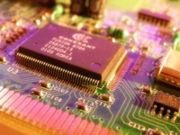Difference between revisions of "Machine intelligence"
| (One intermediate revision by one other user not shown) | |||
| Line 1: | Line 1: | ||
{{early stage}} | {{early stage}} | ||
| − | + | <br> | |
{{portalpage}} | {{portalpage}} | ||
<!-- ****** TOP FRAME ****** --> | <!-- ****** TOP FRAME ****** --> | ||
| Line 10: | Line 10: | ||
<div style="float:left; width:50%;"> <!-- This width add to the the margin below to equal 100%--> | <div style="float:left; width:50%;"> <!-- This width add to the the margin below to equal 100%--> | ||
{{frame1|Sections}} | {{frame1|Sections}} | ||
| + | {{frame1|Artificial intelligence}} | ||
{{frame1|DEF}} | {{frame1|DEF}} | ||
</div> | </div> | ||
Latest revision as of 04:47, 2 July 2010
| << Page in early stages >> |
|---|
|
On the machine side, intelligence is increasing exponentially and should continue to do so for many years to come (see Moore's law
 ). Not only are the total number of information processing units multiplying rapidly, but the relative computing power of each one is increasing exponentially too. ). Not only are the total number of information processing units multiplying rapidly, but the relative computing power of each one is increasing exponentially too.
On top of that algorithms and programming techniques are improving all the time to make more effective use of the hardware, as are distributed computing The ever increasing sophistication and capability of computers mean that progressively more complex tasks can become automated.
We are entering an age of intelligent machines. Computers are becoming increasingly adept at mental tasks beyond just calculating results and storing and retrieving data. They are becoming better at the sort of pattern-recognition and hypothesis-generation that is the essence of human creative intelligence. Computers can now devise “creative” proofs of mathematical conjectures, devise scientific experiments [1] and compose haiku [2]. Computers can be programmed to recognize patterns, to generate and test novel hypotheses and to display creativity, adaptation and ingenuity, albeit still in narrowly-defined areas. With such ingenuity now being displayed by artificial intelligence, it is possible to replace human labour not just at physical jobs like factory assembly, but also mental jobs like astronomy, drug-discovery and strategic planning. Humanity now has an incredible opportunity to use artificial intelligence systems to free us from boring jobs and to advance art, science, mathematics, to create highly-efficient supply-chains for industry, to detect disease faster and more accurately and to design more efficient machines. It is the responsibility of an advanced civilization to learn how to use AI to best serve the needs and wants of Man. Types of AIBut how is it possible for a computer to be creative, adaptive and insightful? I mean, they're just mindless machines that follow rules, right? Well, right, but there are mathematical models of how complex rule-governed systems (like the brain) form creativity and insight. Some of the models used to create artificial intelligence —
Computer simulations of actual neurological processes taking place in the human brain are becoming more and more detailed and powerful. We can now scan the brain in real-time with ever-increasing resolution and this has given us great insight into chaotic, self-organizing, fractal methods of computing information. The rate at which neurological scans be translated into computer simulations is impressive.
The best AI is when a combination of these methods are all used together. A sophisticated AI program might run all these methods in combination and have another AI monitoring them all to find the strengths and weaknesses of each, so as to amplify the intelligence of the whole. One key thing to note is that AI learns from experience; it is not a dumb, rule-bound machine, it is intelligent and adaptive. This allows it to replace humans in many tasks. With the exception of expert systems, all the artificial intelligence methods above are only smart if exposed to a large amount of high-quality learning environments. This is another reason why open collaboration is vital; global collaboration results in the greatest possible amount of learning data for a system, which leads to the most competent possible AI. Uses for AI
|
 [print version]
[print version]  [update]
[update]  [site map]
[site map]